What is Content Atomization? [Practical Guide with Examples]
Marketers are always trying to get more value out of every piece of content they produce. And for most of them, content atomization was the perfect answer.
But what is content atomization? And how does it help marketers produce more content without the need for additional resources?
In this post, we’ll explore everything content atomization has to offer and see how it can help you develop a stronger (and more practical) content marketing strategy.
Let’s get started!
What Is Content Atomization?
Content atomization is a marketing strategy that breaks down a long post into smaller pieces of content. The goal is to not only produce more content from a single source but also to create posts for various marketing platforms.
It shouldn’t be confused with content syndication, which is a completely different thing.
Here’s an example of content atomization.
Say you wrote lengthy, original content about how to fix a broken phone screen. You could stop there if you want. But a smart content marketer will try to squeeze two or more blog articles out of long-form content. So, the longer piece would be your pillar post.
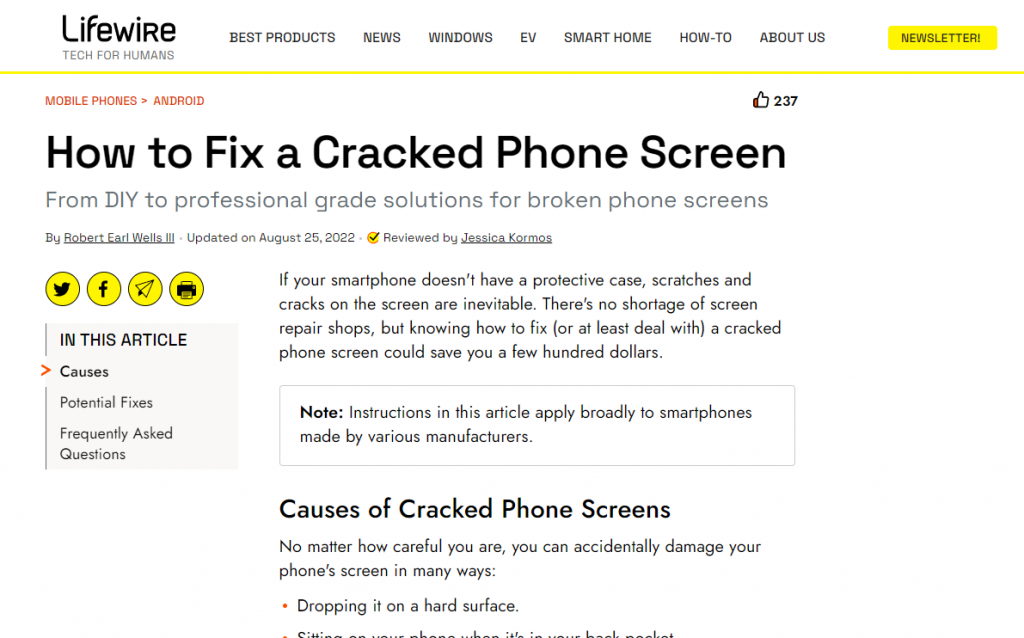
For instance, a section about sourcing the tools and materials the reader will need to fix a broken screen (or what kind of phone case to buy) can have its standalone blog post. And you can have another content piece about the pros and cons of fixing a phone screen by yourself.
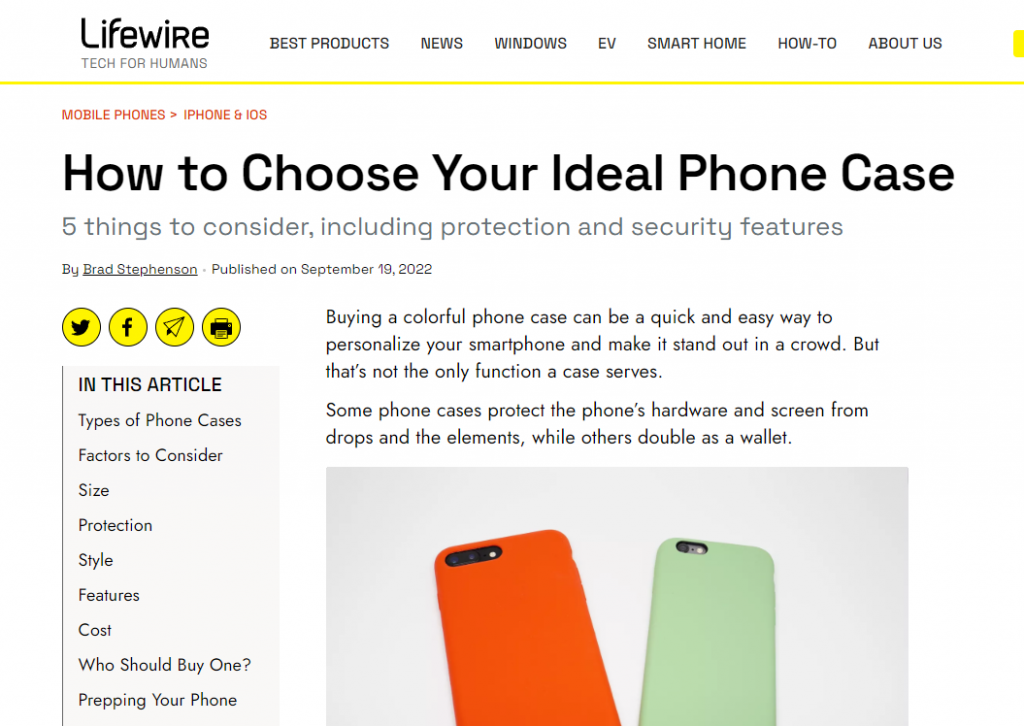
Right away, you’ll have three blog posts instead of one. But you can do more with content atomization.
In particular, using the same example, you can convert the blog post into a podcast episode. Simply grab a couple of juicy quotes from the article and turn them into social media posts. You can also make a tutorial video and post it on YouTube and social media channels. Another option is to publish a slideshow presentation and upload it to SlideShare.
It doesn’t have to stop there, either!
There are other ways to expand on a single piece of content. Depending on the topic, you can do ebooks, forum posts, case studies, email newsletters, webinars, and so much more.
Because you’re using the same source material to create additional content, you neither have to spend more time researching nor hire more writers to work on content atomization. All additional content can be done by the same person who wrote the initial piece.
But why should marketers bother with content atomization? What are some of its perks?
Why Is Content Atomization Important?
Aside from giving you more posts to publish, there are other reasons why content creators should consider implementing this strategy. In fact, most of content atomization’s benefits are in line with the best content marketing tips. To elaborate on this point, let’s go over them in more detail.
Increases efficiency
By using the same source to produce several types of posts, you can publish more content without having to work as hard.
Not only that, but you’re also limiting the number of writers and marketers needed to fill out your content calendar. You’ll probably only need one person to spin off a long blog entry into multiple posts. So you could fill out a weekly content calendar fairly quickly when you use content atomization.
Improves search engine visibility
Content atomization boosts your search engine optimization (SEO) efforts by allowing you to spread more keywords across multiple posts. That gives you more chances to rank for not only your primary keyword but other relevant search terms as well.
Apart from that, you also get to rank for other types of content. Uploading a video tutorial, for example, might help you rank for search queries made under the Videos tab on Google Search.
Exposes you to a wider audience
Since content optimization lets you publish more content, you also get to reach more people. Not only that, but publishing on different channels will allow you to tap into different types of users.
For instance, your long-form post can cater to people who like to read, while its slideshow version might appeal to those who want to consume content faster.
Corollary, people who are constantly on the move would prefer listening to a podcast. Conversely, visual learners might choose a YouTube video over written content.
By presenting more options through content atomization, you’re appealing to a broader audience. Essentially, you can get through to people who didn’t bother checking out your content because it wasn’t in the format they wanted.
Breathes new life into older posts
Find posts that you published months or years ago and create new content out of them. This is a great idea, especially for site owners with lots of outdated content and marketers needing to produce new assets quickly.
Did you just start a newsletter campaign but have no content to share with your subscribers? Converting an old post into a 4-part series and sending one weekly will give you newsletter content for an entire month. That should give you enough time to develop a new content plan or continue atomizing old ones.
Brings new life into platforms you seldom use
You know the importance of social media, but you’re not consistent when uploading content. Or maybe you have a company blog, but you don’t publish posts at all.
If you’re dealing with these issues specifically or something familiar, you’re not alone.
But that’s where content atomization can help. You should be able to come up with new posts for neglected platforms by creating content out of existing ones.
Content atomization is also good for keeping your audience engaged. The community you’ve built will have more chances of joining a conversation if you post more often.
With benefits clear, let’s look at the different content atomization formats marketers often use.
3 Content Atomization Formats to Keep in Mind
Before giving you a step-by-step content atomization guide for marketing campaigns, it’s important to distinguish the different types of formats that you can use.
It’s worth noting that any of these formats can serve as a starting point. While the common example of content atomization involves splitting a long-form blog post into several new ones, you can just as easily use survey results to write articles and record videos.
Format #1: Written
Written content might be the easiest to break down into several parts. It could also be the most accessible for most marketers since it won’t require them to use special tools. So long as you have access to a publishing platform, you can post this content type.
You can use the following assets for content atomization:
- Blog posts – the most obvious choice as they are typically filled with information that can be expanded further.
- Tweets – discuss topics covered by your existing blog posts in Facebook groups or create Twitter threads about them.
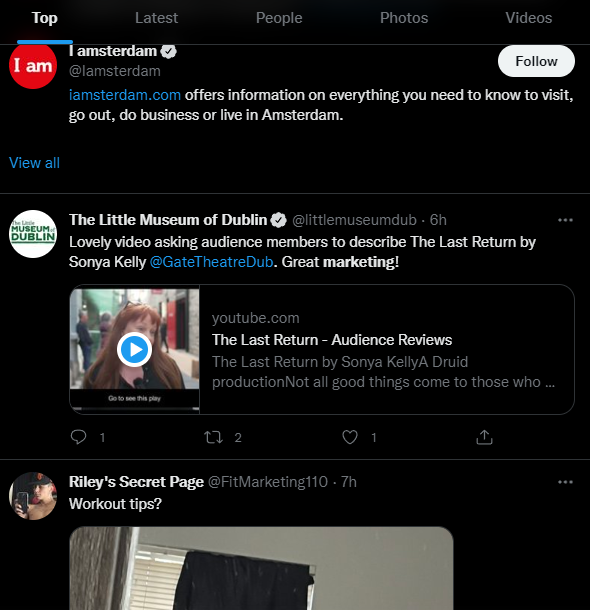
- Facebook posts – despite being overtaken by social platforms like TikTok, Facebook remains a reliable social channel as millions of people still access it every day. Share quotes from your content here and link back to the original source where people can read, watch, or listen to them.
- Guest posts – break down an article into different topics and propose those as guest posts when reaching out to webmasters. You can then link to the original piece from the guest post for some sweet link juice.
- LinkedIn posts – if your target audience is in the B2B space, it only makes sense to regularly publish posts on LinkedIn. You’ll get higher engagement and be able to rub shoulders with influencers by sharing a well-written post or status update.
- Emails – use email atomization to continue offering value to your email subscribers. You can also use email triggers to send a specific type of content that you produced through atomization.
- Reviews and testimonials – if you’re selling a product or service, you can turn positive customer reviews into bite-sized social posts or full-blown case studies. This helps spread the word about how happy customers are with your business.
- Press releases – newsworthy topics about your company, such as reaching milestones and partnering with other businesses, deserve a written press release.
Of course, not everyone has time to read what you publish, which makes the following format even more important.
Format #2: Audio and visual
Audio and visual content is a bit trickier to produce since it would require access to specific design and content marketing tools or applications. You’ll also have to invest in workflow automation since you’ll have to hire more people with qualifications to work with such content.
For instance, you’ll need at least a video editor to create social media posts. And you’ll need graphic artists to produce static content. However, there are solutions available that can help just about anyone craft visual and audio content for their website and social pages.
You can give these types of audio and visual content a go:
- Podcasts – turn your published content into the audio format by talking about it or using tools to convert it into an audio file. The latter is much easier to execute, but the former is more conducive to a podcast as it’s not just a repeat of what you already wrote.
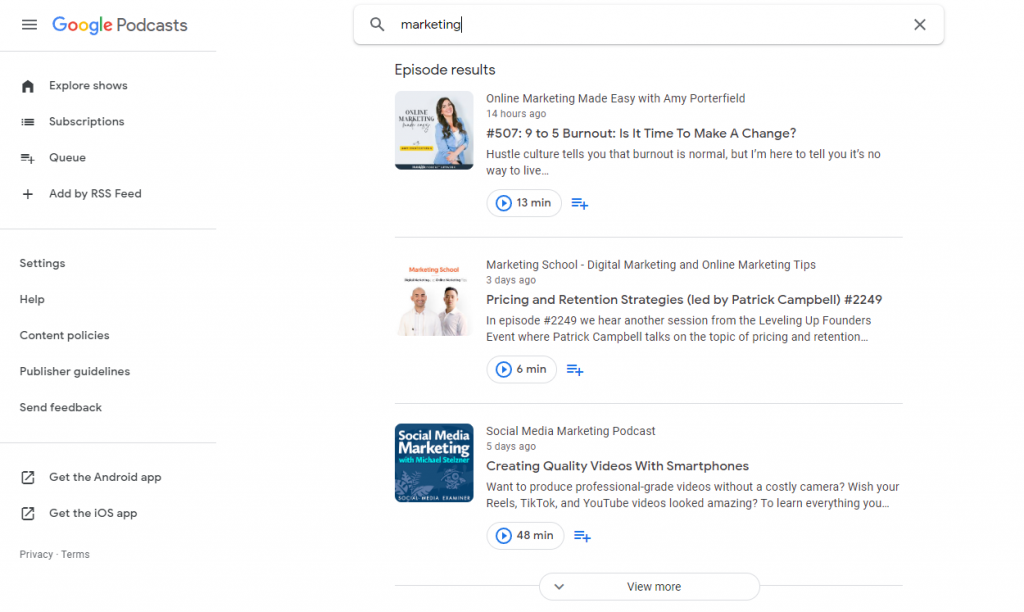
- Social media posts – create short audio and video files about a topic and upload them on your social channels. You can also grab quotes from your blog post and upload them as an image on your social media pages.
- GIFs and memes – if humor is part of your brand, you should leverage memes as part of your content atomization strategy. Use popular meme templates and GIFs to react to topics relevant to your niche.
- Infographics – Turn your existing content into infographics and post them on Pinterest, infographic submission sites, and other social platforms. Remember to link back to the original source while you’re at it!
- YouTube, TikTok, and Facebook videos – convert blog posts into actionable videos you can upload on these channels. When creating content on TikTok, it’s best to keep it short and sweet—around 15 seconds should be enough.
- Live streaming – while this channel is primarily geared towards gaming, marketers also use it for content atomization. You just have to find the right live-streaming platform to use. While you’re less likely to find a non-gaming audience on Twitch, YouTube Live might be good, especially if you heavily promote it.
We move on to the last format, which requires audience participation.
Format #3: Interactive
Interactive content refers to content that people have to use for marketers to gain valuable data. Here are a couple of examples.
- Polls – perfect for gathering data that you can then use to create other types of posts like case studies.
- Games and challenges – depending on your game, you can get user-generated content from participants to use as an additional asset for your content strategy.
- Quizzes and self-assessments – they help your target audience learn more about themselves. More importantly, you get to profile your audience according to their demographics, so you know what content they want to see from you.
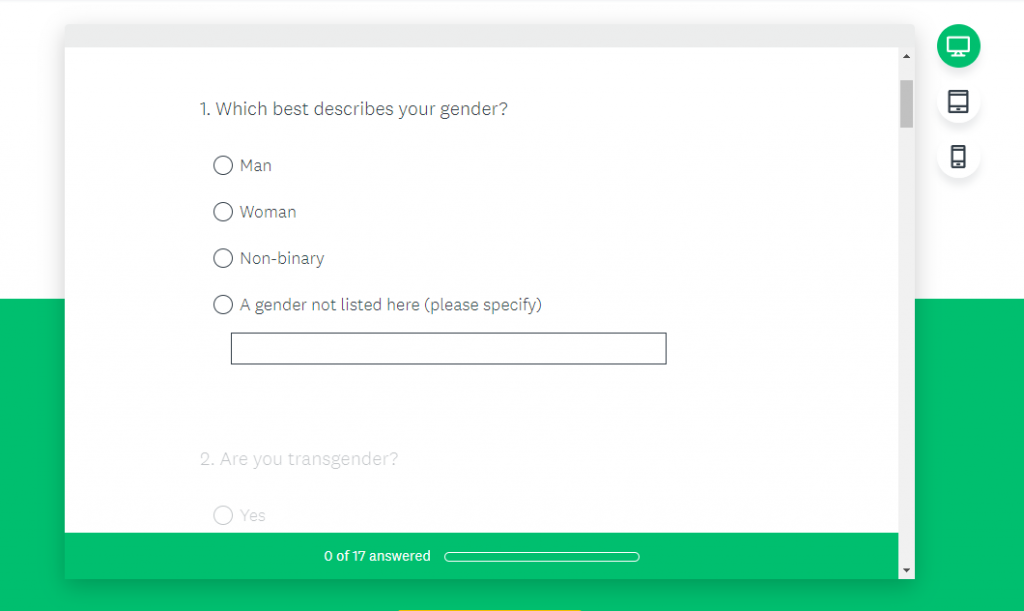
- Surveys – similar to quizzes, these are tried-and-tested formats of gathering information about people on your website. They’re also handy for improving your products and services.
Now that you know the formats for your content atomization initiative, below are additional ways to develop your strategy the right way.
How to Nail Your Content Atomization Efforts: Step-by-Step Guide
Are you performing content atomization for the first time? Do you need some help?
Not a problem. Here’s everything you need to do to start your content atomization strategy.
Step 1: Spot an atomizable piece of content
The first thing you need to do is to find a content idea that’s suited for atomization.
Say you created a YouTube video on how to care for a pet hamster. You can turn that video into an infographic that you can use for guest post opportunities. Besides, it’s possible to make graphics for social media posts. Another idea is to share the video directly on social media sites too. It would also make for a great how-to blog post.
What’s important is that you find content that you can build upon. It’s always best to choose evergreen content (an existing piece of content that will always have high relevancy) and atomize it. These are usually great starting points since people always search for evergreen posts.
Step 2: Identify your target audience
What content atomization formats you will use will depend heavily on your target audience. You need to know where to find your readers and what type of content they’re more likely to consume.
Remember: each platform is home to different types of audiences and formats. That’s why your content should be suited to a specific channel.
For instance, you can get away with short-form video content on social media platforms like Instagram and TikTok. However, such videos won’t be great on a platform like LinkedIn. In this case, you should use a content atomization format like infographics.
Once you have a better understanding of your audience, you’ll have an easier time deciding which different platforms to use for your content creation.
Step 3: Choose your atomization method
At this point, you should know three things: which of your content assets to atomize, who your target audience is, and where you can find your readership.
Now it’s time to choose how you deliver your atomized content.
What you should remember is that you can create more than one content type from the same asset. When you decide to atomize a long blog post, you can create more than one blog from it. The same applies to infographics, podcast episodes, and other types of content.
As long as it makes sense, you can create as much content as possible.
You can create an online course from a blog post to help your readers improve their knowledge. And at the end of it, you can throw in a quiz to assess if they were able to grasp everything you’ve been trying to teach.
And yes, you can do as many social media posts as you want. Just remember to space out the publish dates so you don’t annoy your followers. You’ll want to post frequently and consistently — but still in moderation.
Once you’ve settled on the methodology and have finalized your atomized content, you can start posting it on all your platforms.
Step 4: Measure and iterate
After posting your content, it will become a waiting game.
You’ll need to give your content some time before you can get measurable data out of it. You can use whatever metrics you think would help you the most. However, if you’re new to this, sticking to the usual metrics might be a good start.
Here’s an example: if you’ve just begun sharing on social media sites, you can use likes, shares, and comments as your basis for success. If your posts hit your target, you can pat yourself on the back and continue using that strategy.
But if you can’t reach the goal, you might have to adjust. Maybe you’re using the wrong method. If so, you’ll have to iterate and find another approach that might work for your intended audience.
You can try doing a white paper, email marketing, or Instagram posts. There are many digital marketing content types that can bring your performance to the next level.
It’s also worth pointing out that there might be some other factors at play that have nothing to do with the content itself. The time of day you post your content, for instance, might be the reason why you’re not getting the results you’re after. If that’s the case, try making minor adjustments before totally bailing on the method you chose.
Now Over to You
Don’t let your content go to waste. Use content atomization to create new pieces for different content platforms. This will not only help you fill in your content calendar, but this strategy will also increase your reach.
You’ll get seen by more people by working more efficiently. You just can’t lose with content atomization.
Want to learn more? Come and check out our blog, starting with our content strategies. From here, you’d want to know the difference between long-form and short-form content, and which one’s suitable for you.

Christopher Jan Benitez is an accomplished content writer and a contributor at Digital Marketer’s World. He specializes in content marketing, Search Engine Optimization, and web marketing.
